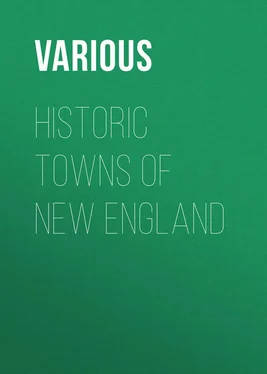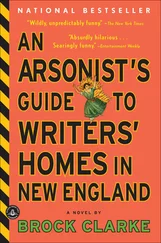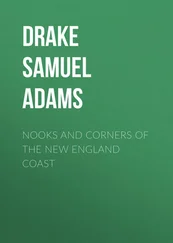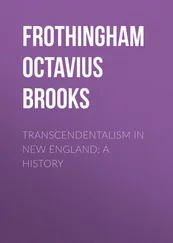Various - Historic Towns of New England
Здесь есть возможность читать онлайн «Various - Historic Towns of New England» — ознакомительный отрывок электронной книги совершенно бесплатно, а после прочтения отрывка купить полную версию. В некоторых случаях можно слушать аудио, скачать через торрент в формате fb2 и присутствует краткое содержание. Жанр: История, foreign_edu, Путешествия и география, на английском языке. Описание произведения, (предисловие) а так же отзывы посетителей доступны на портале библиотеки ЛибКат.
- Название:Historic Towns of New England
- Автор:
- Жанр:
- Год:неизвестен
- ISBN:нет данных
- Рейтинг книги:4 / 5. Голосов: 1
-
Избранное:Добавить в избранное
- Отзывы:
-
Ваша оценка:
- 80
- 1
- 2
- 3
- 4
- 5
Historic Towns of New England: краткое содержание, описание и аннотация
Предлагаем к чтению аннотацию, описание, краткое содержание или предисловие (зависит от того, что написал сам автор книги «Historic Towns of New England»). Если вы не нашли необходимую информацию о книге — напишите в комментариях, мы постараемся отыскать её.
Historic Towns of New England — читать онлайн ознакомительный отрывок
Ниже представлен текст книги, разбитый по страницам. Система сохранения места последней прочитанной страницы, позволяет с удобством читать онлайн бесплатно книгу «Historic Towns of New England», без необходимости каждый раз заново искать на чём Вы остановились. Поставьте закладку, и сможете в любой момент перейти на страницу, на которой закончили чтение.
Интервал:
Закладка:
Subtract from the history of education in the United States, during the latter half of the century just closing, the influence of four men, Horace Mann, Henry Barnard, Charles William Eliot, and William Torrey Harris, and you take from it the best that it stands for to-day. All of these men were born in New England. All were reformers. All showed great administrative ability. All lived to see their radical views find general acceptance. Horace Mann did his greatest work in remodelling the public-school system of Massachusetts. Barnard did a similar work in Connecticut, Rhode Island, and Wisconsin, but his greatest service to the cause of education was his masterly editing of the American Journal of Education , from 1855 to 1881. Eliot has transformed the curriculum of Harvard, the oldest university of the North, has resolutely contended for the largest measure of election by the student in his selection of studies, his personal conduct, and his personal attitude toward God, and he has made “Veritas” in very truth the appropriate motto of the leading American institution of learning. Harris, as an interpreter of the philosophy of education, both in his many writings and more numerous addresses, has lifted the popular conception of the profession of teaching to a loftier and more rational plane, while his control of the United States Bureau of Education since 1889 has given it a standing abroad, and a measure of utility at home, which it is gratifying to contemplate.
Few towns in New England possess more charm, whether of nature or society, than the towns in which her long-established institutions of learning have taken root, flourished, and dominated the life of the community. New Haven, Cambridge, and Providence are all cities now with a heterogeneous population and large manufacturing interests, and they each contain thousands of inhabitants to whom Harvard, Yale, and Brown are of as little practical benefit or concern as if they were situated in remote Hawaii or Porto Rico. Nevertheless, the chief glory of each of these large towns is its institution of learning, and to each there come added beauty of life and elevation of tone because of the presence within its borders of so many thirsty and hungry students and highly educated and apt instructors. It would be idle, however, to claim, for instance, that Cambridge to-day is quite as unique and charming in its simplicity and purity of life, or quite as classic in its atmosphere, as it was in the days when the town was a village, when the university was a college, and when thought and manners were as ideal as James Russell Lowell in his essay, Cambridge Thirty Years Ago , and Thomas Wentworth Higginson in his latest book, Cheerful Yesterdays , picture them.
To study the American college town at its best, unsullied by the grime of industrialism and the temptations and conventionalities of city life, one must go to hill-towns like Amherst and Williamstown, Massachusetts, or Hanover, New Hampshire. But even there, standards of living and conduct among students and instructors have been changed and influenced by the habits and ideals of the universities and the cities. Hence, to see the American college town in all its pristine simplicity and beauty, one now has to go to the new New England, and visit such institutions as Oberlin, Beloit, Knox, Iowa, and Colorado colleges, concerning which, and others of their type, Mr. Bryce writes:
“They get hold of a multitude of poor men who might never resort to a distant place for education. They set learning in a visible form, plain indeed and humble, but dignified even in her humility, before the eyes of a rustic people, in whom the love of knowledge, naturally strong, might never break from the bud into the flower, but for the care of some zealous gardener. They give the chance of rising in some intellectual walk of life to many a strong and earnest nature who might otherwise have remained an artisan or storekeeper, and perhaps failed in those avocations.” 5 5 Chapter cii., Bryce’s American Commonwealth . For an interesting and significant account of the impression made by one of the Western Christian colleges upon a friendly and thoroughly trained French observer, see the translation of an article by Th. Bentzon (Madame Blanc) in the Revue des Deux Mondes , printed in McClure’s Magazine , May, 1895.
New England has a railroad mileage greater in proportion to its population and area than any section of the United States. Indeed, it is greater than that of any European country. In 1895, there were 11.77 miles of railroad for each one hundred square miles of territory, and 14.11 miles for each ten thousand inhabitants, the proportion in Massachusetts rising to 26.35 miles for each one hundred square miles. The same year, the number of employés engaged in railway traffic in New England was 60,593. On January 1, 1840, New England had only 426 miles of railway. January 1, 1895, it had 7,398 miles of road, which reported gross earnings of $82,845,401, and 116,069,178 passengers transported during the previous year.
The significance of these facts is apparent to the casual traveller through New England as well as to the economist. Nerves of steel and iron have bound urban and rural populations together, made the cities and towns accessible to the inland trader, farmer, and producer, and the country districts accessible to the wares of the merchant and manufacturer, and to the lover of nature. Suburban residence for the urban toiler has been made possible and cheap, while New England, as a whole, has been transformed from an agricultural and seafaring section to one with great and most varied manufacturing interests. Boston has come to be next to the largest centre for exports in the country, and the commercial and industrial as well as the intellectual capital of New England.
From the standpoint of æsthetics, the railroad station in the average New England town is a monstrosity, although in all fairness it should be said that within a decade there has been a notable improvement in this respect. But from the standpoint of economics and social science, the railway station is subordinate only to the church and the school in its service to society; and the degree of civilization in any community may be accurately computed by the volume and variety of the traffic done with its station agents. If one is desirous of studying the New England town, let him frequent the platforms of the railroad station and the freight-house, ascertain how large a proportion of its inhabitants leave town daily to do business in the adjacent city, how many travel even farther in pursuit of pleasure or on business, how many depart on outings that imply thrift and a desire for recreation and rest. Let him study the bulk of the raw material as it comes from the wool-markets of Europe and America, from the cotton fields of the South, and from the mines of Alabama, Pennsylvania, and Minnesota, and then inspect it as it goes forth again, converted into manifold forms of useful tools, machinery, fabrics, etc., and he will not lack for data respecting the status of the community. If he finds that pianos, organs, books, pictures, the latest devices of sanitary science, bicycles, etc., are arriving, he may justly infer that the inhabitants are in touch with the outer world and eager to take advantage of the latest discoveries of men of science. Nor is it imprudent to assert that such a study made in the average New England town will indicate economic wants, and their satisfaction, such as no communities elsewhere can display.
Compared with other sections of the country, New England has railroads which are better supervised by the States, more honestly constructed, capitalized and administered, and more responsive to public needs. Concentration of power and responsibility in the hands of the few goes on apace in New England, as well as elsewhere, so that now there are only four railway corporations of much importance in New England. But, through such governmental agents as the Massachusetts Board of Railroad Commissioners (organized in 1869, and the model for similar bodies elsewhere in the nation), the people still retain the whip-hand, still protect the rights of individuals, communities, and investors, and bring about those reductions in fare and freight charges, and those improvements in service, which public welfare and safety demand.
Читать дальшеИнтервал:
Закладка:
Похожие книги на «Historic Towns of New England»
Представляем Вашему вниманию похожие книги на «Historic Towns of New England» списком для выбора. Мы отобрали схожую по названию и смыслу литературу в надежде предоставить читателям больше вариантов отыскать новые, интересные, ещё непрочитанные произведения.
Обсуждение, отзывы о книге «Historic Towns of New England» и просто собственные мнения читателей. Оставьте ваши комментарии, напишите, что Вы думаете о произведении, его смысле или главных героях. Укажите что конкретно понравилось, а что нет, и почему Вы так считаете.












